TSX futures inch lower after index closes at new all-time high
Introduction & Market Context
Turtle Beach (NASDAQ:TBCH) Corporation (NASDAQ:HEAR) presented its second quarter 2025 earnings results on August 7, 2025, revealing a mixed performance as the gaming peripherals maker navigates a challenging market environment. The company reported a revenue decline compared to the same period last year but showed improvement in gross margins and maintained its full-year guidance, suggesting confidence in its long-term strategy.
Turtle Beach is positioning itself to capitalize on the $11.2 billion gaming accessories market, with strategic focus across four key segments: headsets ($2.9B), controllers ($3.0B), PC peripherals ($3.9B), and simulation accessories ($1.4B). The company reported gaining market share in its core gaming headset business while continuing to expand its product portfolio across multiple gaming peripheral categories.
As shown in the following market opportunity breakdown from the company’s presentation:
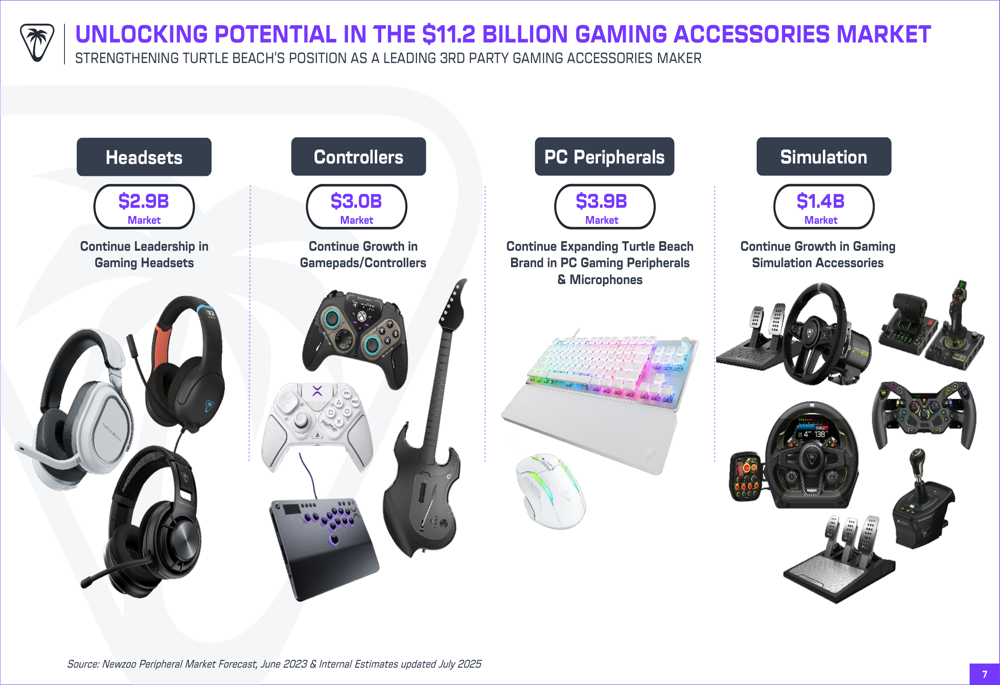
Quarterly Performance Highlights
Turtle Beach reported Q2 2025 revenue of $56.8 million, a significant decrease from $76.5 million in Q2 2024. Despite the revenue decline, the company improved its gross margin to 32% from 30% in the year-ago quarter, which it attributed to cost optimization initiatives. The company also reduced operating expenses to $18.6 million from $27.2 million in the prior-year period.
The company’s net loss narrowed to $2.9 million in Q2 2025 compared to a $7.5 million loss in Q2 2024, while adjusted EBITDA was negative $3.0 million compared to positive $3.0 million in the same quarter last year. Diluted loss per share improved to $0.14 from $0.35 in the prior-year period.
The following financial review highlights the key metrics for the quarter:

Turtle Beach also reported that it continued its share repurchase program, buying back $5.0 million in common shares during Q2, bringing the total to approximately $35 million over the past six quarters. The company’s diluted share count decreased to 20.7 million from 21.3 million a year ago.
Financial Analysis
Turtle Beach strengthened its capital structure during the quarter by refinancing its debt facilities with a new $90 million revolving credit facility and a $60 million term loan, which the company said reduces its base interest rate. As of June 30, 2025, the company reported:
- Cash and cash equivalents of $11.7 million
- Inventory of $76.8 million
- $19.9 million drawn on its revolving credit facility
- Term loan balance of $43.3 million
- Net debt (debt less cash) of $51.5 million
The company’s GAAP to adjusted EBITDA reconciliation provides additional insight into its financial performance, including the impact of various non-recurring items:
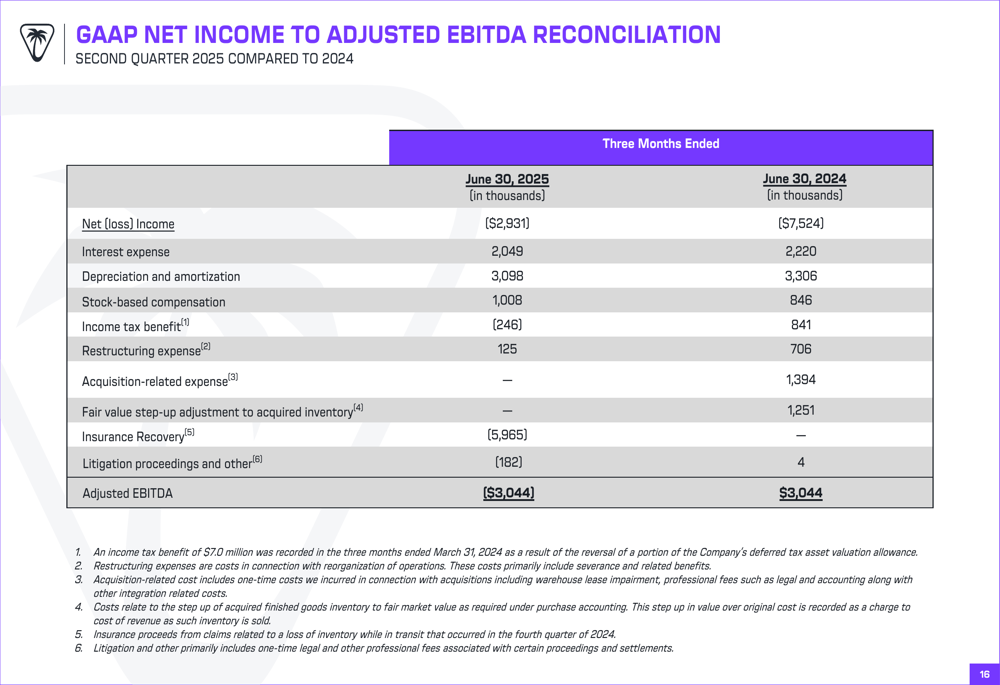
Strategic Initiatives & Product Expansion
Turtle Beach is executing a multi-pronged strategy to expand beyond its traditional gaming headset business. The company highlighted several new product launches across multiple categories, demonstrating its commitment to diversification.
In the headset category, the company introduced the Turtle Beach Airlite Fit for Nintendo Switch 2, an officially licensed headset with an MSRP of $27.99, targeting the affordable segment of the market:
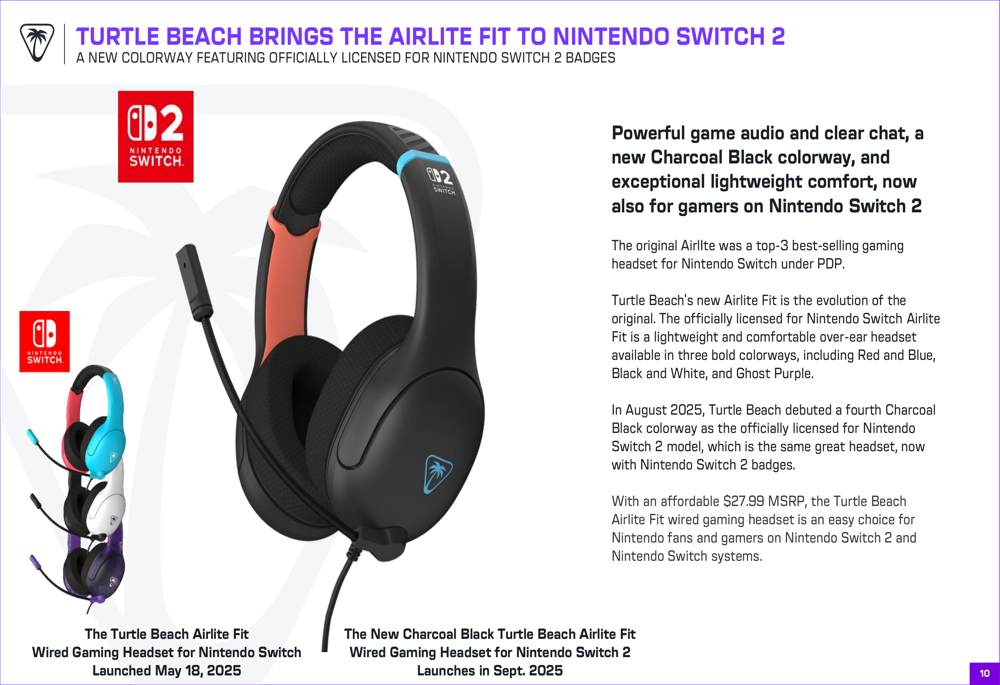
Turtle Beach is also expanding its racing simulation accessories lineup with the VelocityOne Race KD3 system, VelocityOne F-RX Wheel, and Racer Wireless Wheel, offering products at various price points to capture different segments of the simulation market:
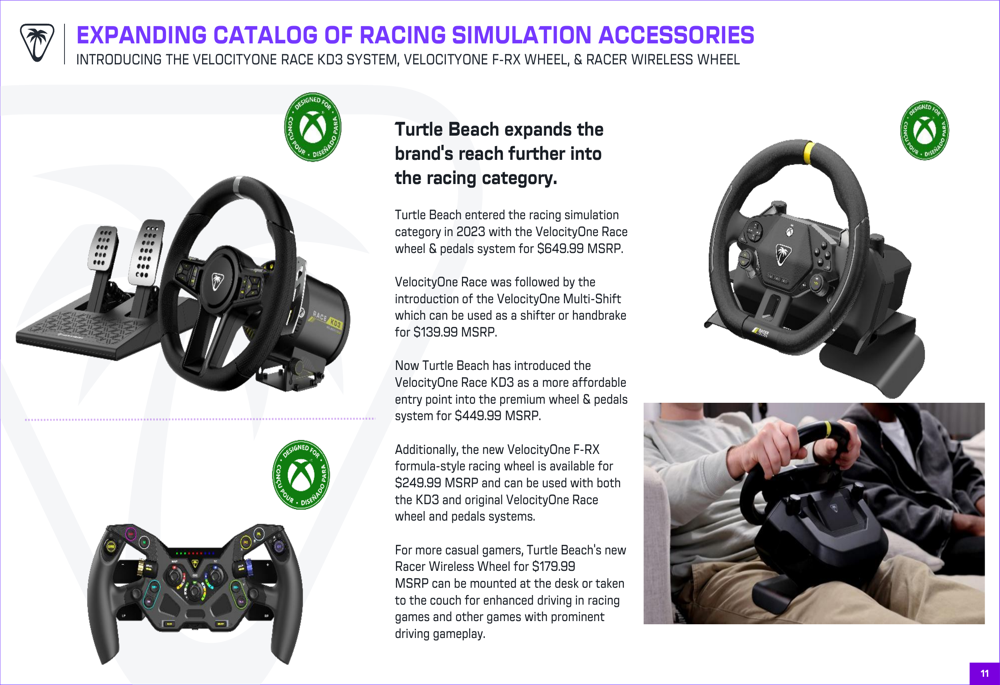
For the controller market, the company unveiled the Victrix Pro BFG Reloaded Modular Controller featuring Hall Effect Sticks & Triggers and a reoriented Fightpad module, targeting competitive gamers and the fighting game community:
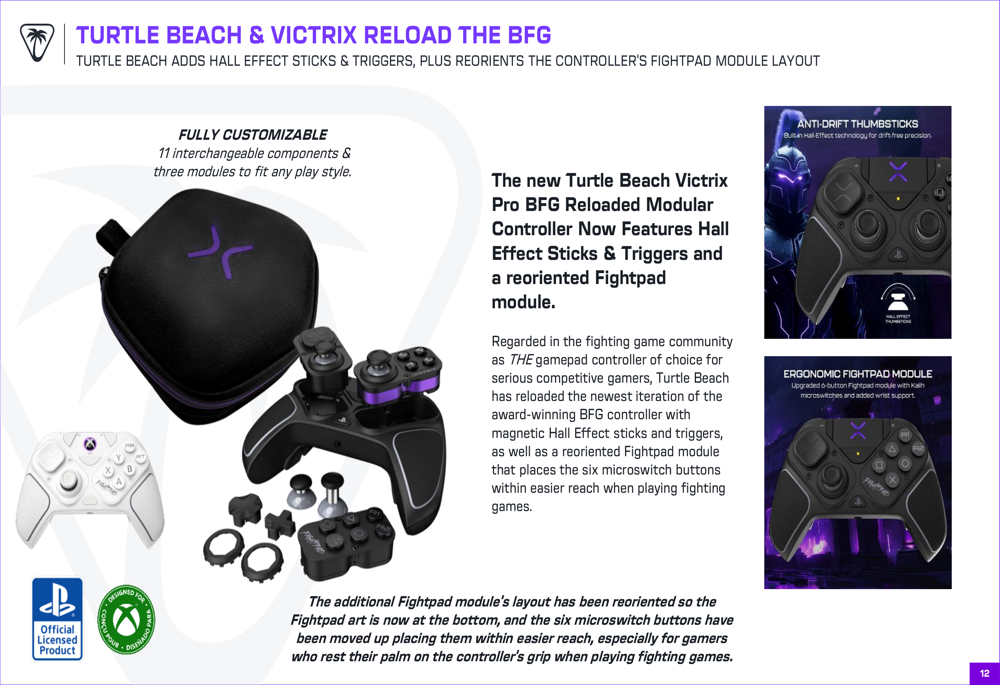
Forward-Looking Statements
Despite the revenue decline in Q2, Turtle Beach maintained its full-year 2025 guidance, projecting net revenue of $340-360 million and adjusted EBITDA of $47-53 million. The company also reaffirmed its long-term financial targets, including:
- Revenue growth of 10%+ CAGR
- Gross margins in the mid-to-high 30% range
- Adjusted EBITDA margins in the mid-to-high teens
The following slide outlines the company’s guidance and long-term targets:
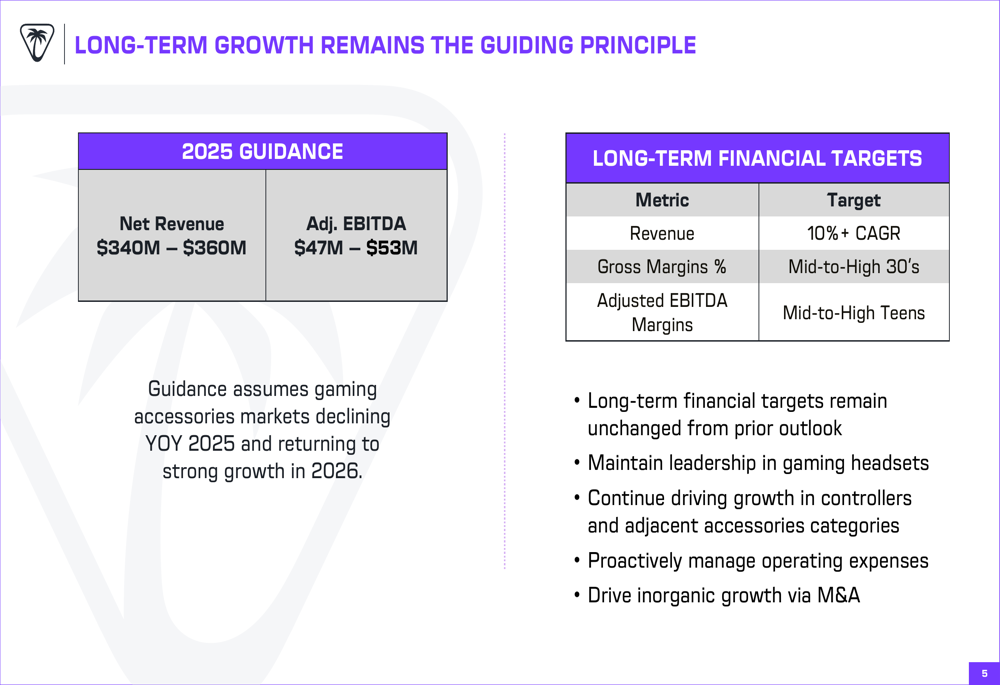
Turtle Beach’s strategy for achieving these targets includes maintaining leadership in gaming headsets, driving growth in controllers and accessories, managing operating expenses, and pursuing inorganic growth opportunities. The company emphasized that its product diversification strategy is designed to reduce reliance on any single gaming peripheral category while capitalizing on its brand strength across the broader gaming accessories market.
While the company faces near-term revenue challenges, management expressed confidence in its ability to execute its long-term strategy and deliver value to shareholders through both operational improvements and continued share repurchases.
Full presentation:
This article was generated with the support of AI and reviewed by an editor. For more information see our T&C.
